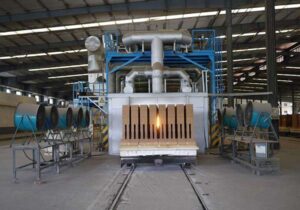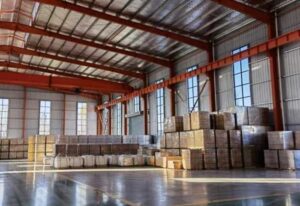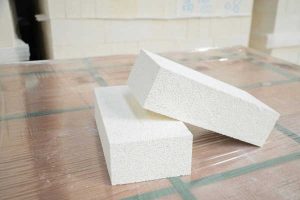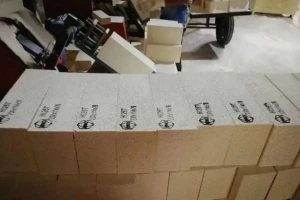What Is Shaped Refractory Brick?
Shaped refractory bricks, referred to as firebricks, can withstand various physical and chemical changes and mechanical effects at high temperatures. And shaped refractory bricks are refractory materials with certain shapes and sizes.
Shaped refractory bricks can be divided into fired bricks, unfired bricks, electrofused bricks (fused casting bricks), and refractory heat-insulating bricks according to the preparation process. In addition, special-shaped refractory bricks according to their shape and size can be divided into standard bricks, ordinary bricks, type of turn, and so on. Shaped refractory bricks can be used as high-temperature building materials and structural materials for construction kilns and various thermal equipment.
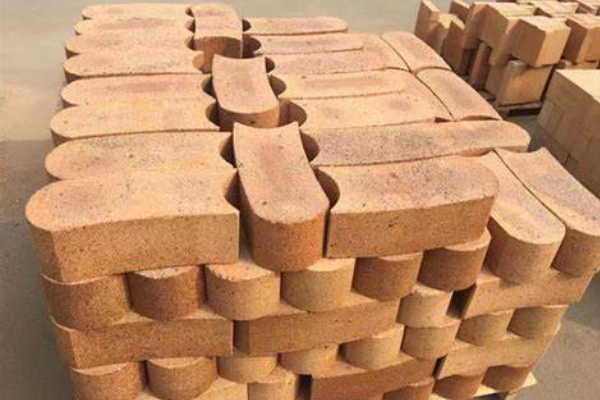
Relationship Between Product Structure and Temperature of Profiled Refractory Bricks
The main feature of profiled refractory bricks is high early strength, 3-7 days maximum room temperature compressive strength up to 30MPa or more. The disadvantage is that the volume stability of the medium temperature is poor, the strength is reduced, and the maximum reduction can be up to 40% or so, so the requirement of room temperature compressive strength must meet the design and national standards requirements.
Its temperature strength reduction is the main factor: shaped refractory bricks of low-calcium high alumina cement in the heating furnace baking furnace warming process to reach a certain temperature (350 ℃ or so), hydride began to dewatering, the transformation of the hydride of the cementite structure, compactness and strength of the reduction in the volume of the castable material changes. At this time, the strength of the castable body drops to the lowest point and then tends to stabilize.
As the heating temperature rises to 1100 ℃, cementite gradually sintered, shaped refractory brick crystal type began to transform mullite crystals. As the temperature continues to rise, mullite crystals continue to grow, the matrix glass phase in the casting material is a liquid state, the formation of high-temperature ceramic sintered shape, and the strength significantly increases. At about 1300 ℃, the strength of the shaped refractory brick body can reach more than 60MPa. This is a significant feature of shaped refractory bricks in the high-temperature state.
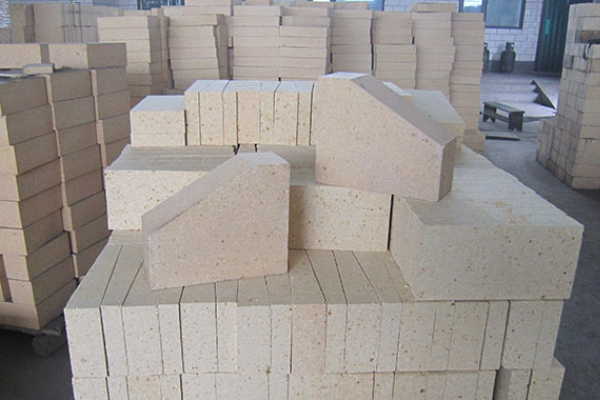
Shaped Brick: T46 High Alumina Arched Corner Brick
Arch brick is a commonly used refractory brick when masonry doors, generally used with standard refractory bricks and wedge-shaped refractory bricks. Attention needs to be paid to soffit masonry. Any soffit brick consists of a right triangle, i.e. the soffit brick has two angles of inclination which are mutually exclusive.
For example, the other angle of inclination of an arch block with an inclination angle Φ=520 is 380, so the 380 arch angle used for a vault with a center angle of 1040 can be used as the other angle of inclination of a 520 arch block. The two residual angles of the arch angle of the furnace roof with thicknesses of 380 and 440 mm are sometimes used in this way. In this way, the arch of the standard angle of inclination includes 300. 380, 450, 520, and 600. arch corner brick bevel length L should be equal to the size of the head of the wedge with the distance b, generally used 114, 230, 300, 380, and 440mm.
Arch brick bricks are made of 50% soft sticky ten and 50% hard sticky ten clinkers, batching according to certain particle size requirements, molding, drying, and firing at a high temperature of 1300~1400°C. The bricks are made of high alumina, high alumina, and low alumina, and the bricks are made of high alumina, high alumina, and low alumina. There are high alumina and clay arch foot bricks, they have different alumina content, and different physical and chemical properties, of course, the price is also different.
Characteristics and Application of Blast Furnace Soffit Bricks
High alumina foot brick is an Al203 content of not less than 48-75% of the aluminum silicate refractory bricks. The shape consists of a right-angle triangle and two inclined angles to each other. The production process is similar to that of clay refractory bricks. According to the use of different grades of bauxite clinker, different quality requirements, as well as the choice of formula bonding agent, the appropriate proportion of distribution, with the brick press molding calcined from.
High-alumina arched corner bricks are usually made of high-alumina Gongshi needle material with a small amount of clay, which is ground finely and then cast in the form of slurry by gas generation method or bubble method, and shaped. Fired at 1300~1500℃. Sometimes also available industrial alumina instead of part of the alumina clinker, used for masonry kiln lining and insulation layer, as well as no strong high-temperature molten material erosion and scouring effect of the parts of the direct contact with the flame, the surface contact temperature shall not be higher than 1350 ℃.
High-alumina arch foot brick: small bulk density, light weight; low thermal conductivity, good thermal insulation properties, small linear changes after firing. Mainly used in heat boilers, glass kilns, cement kilns, fertilizer gas furnaces, blast furnaces, hot air furnaces, coking furnaces, electric furnaces, casting and pouring steel bricks, and so on.

